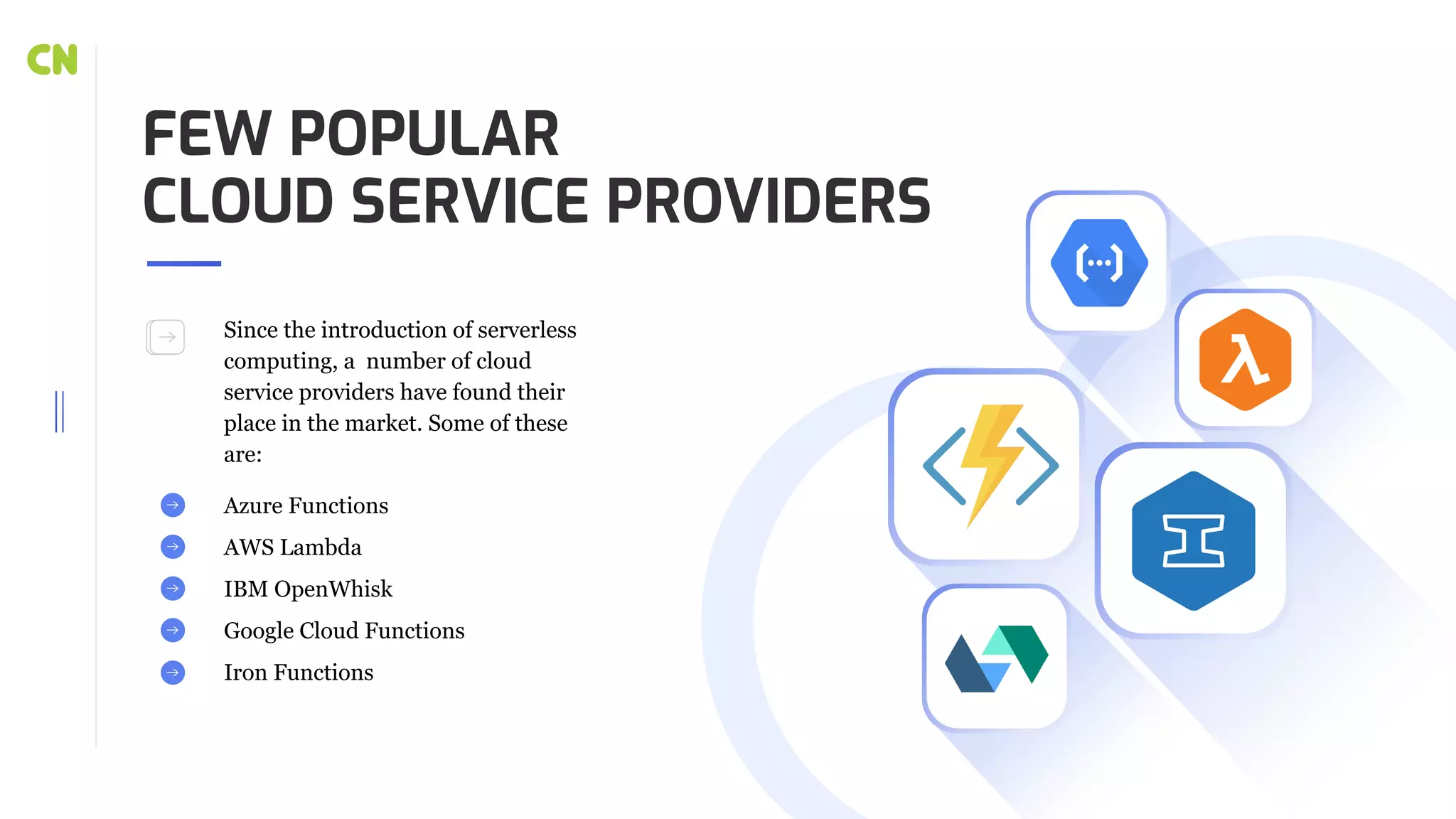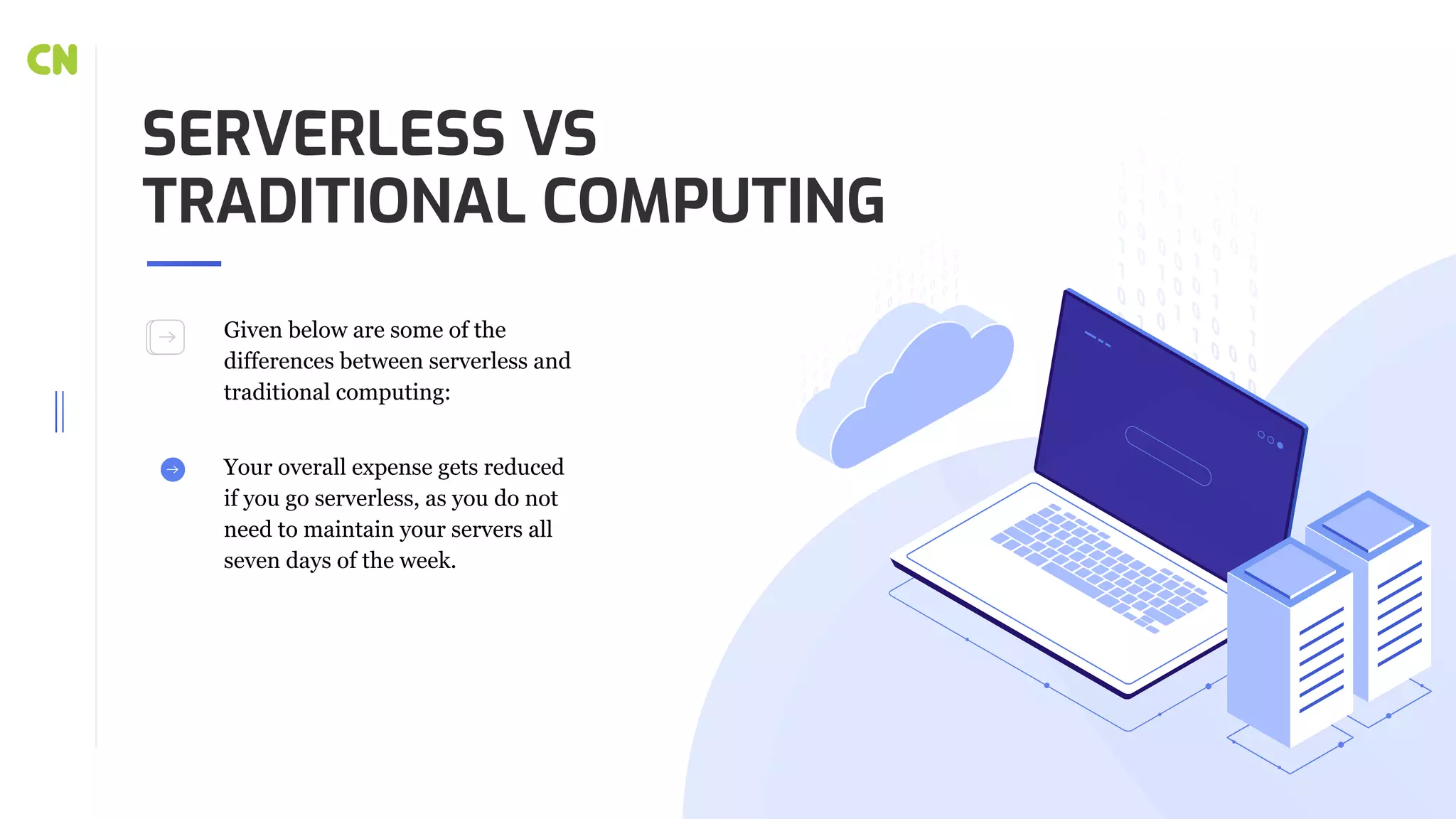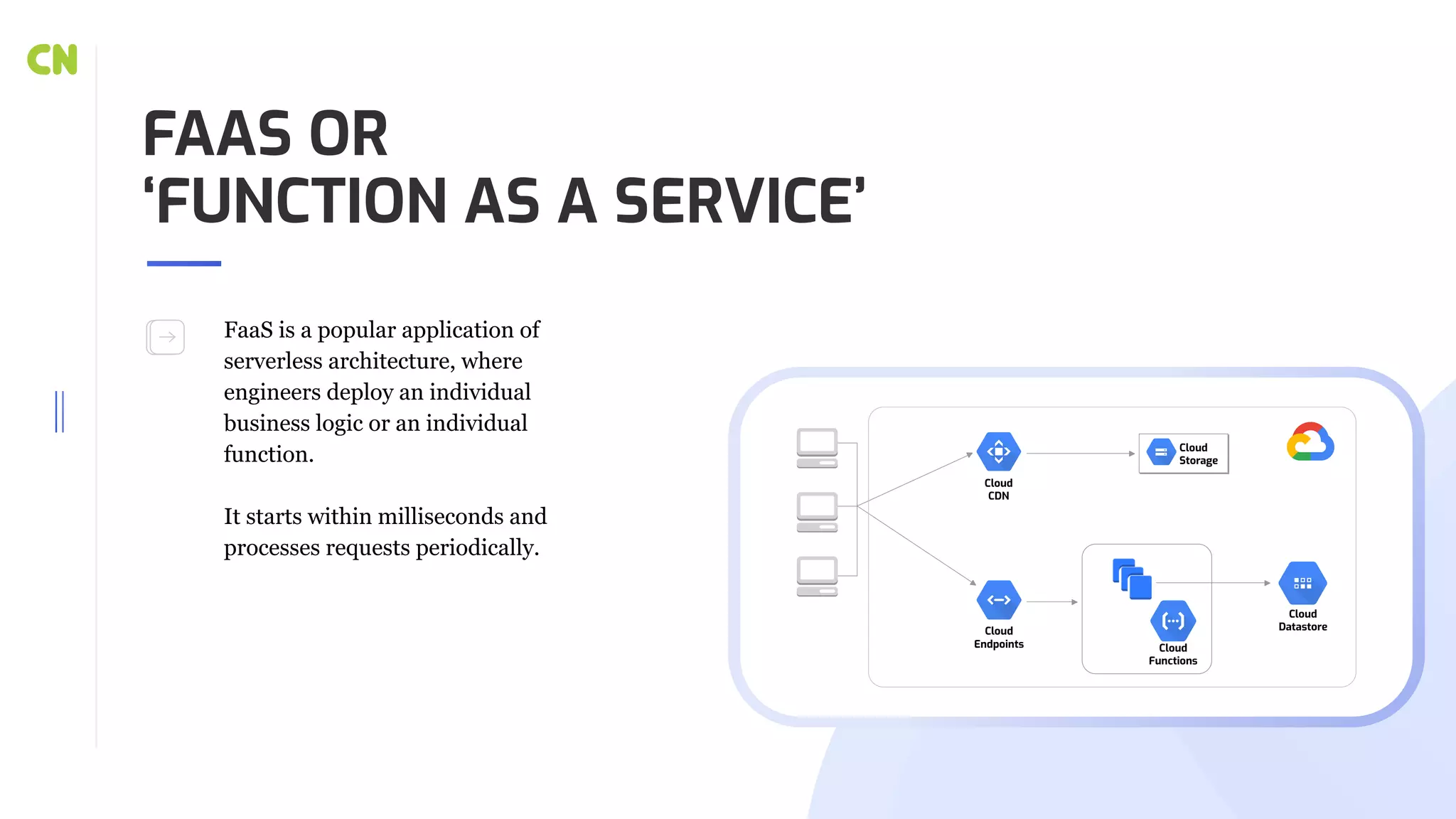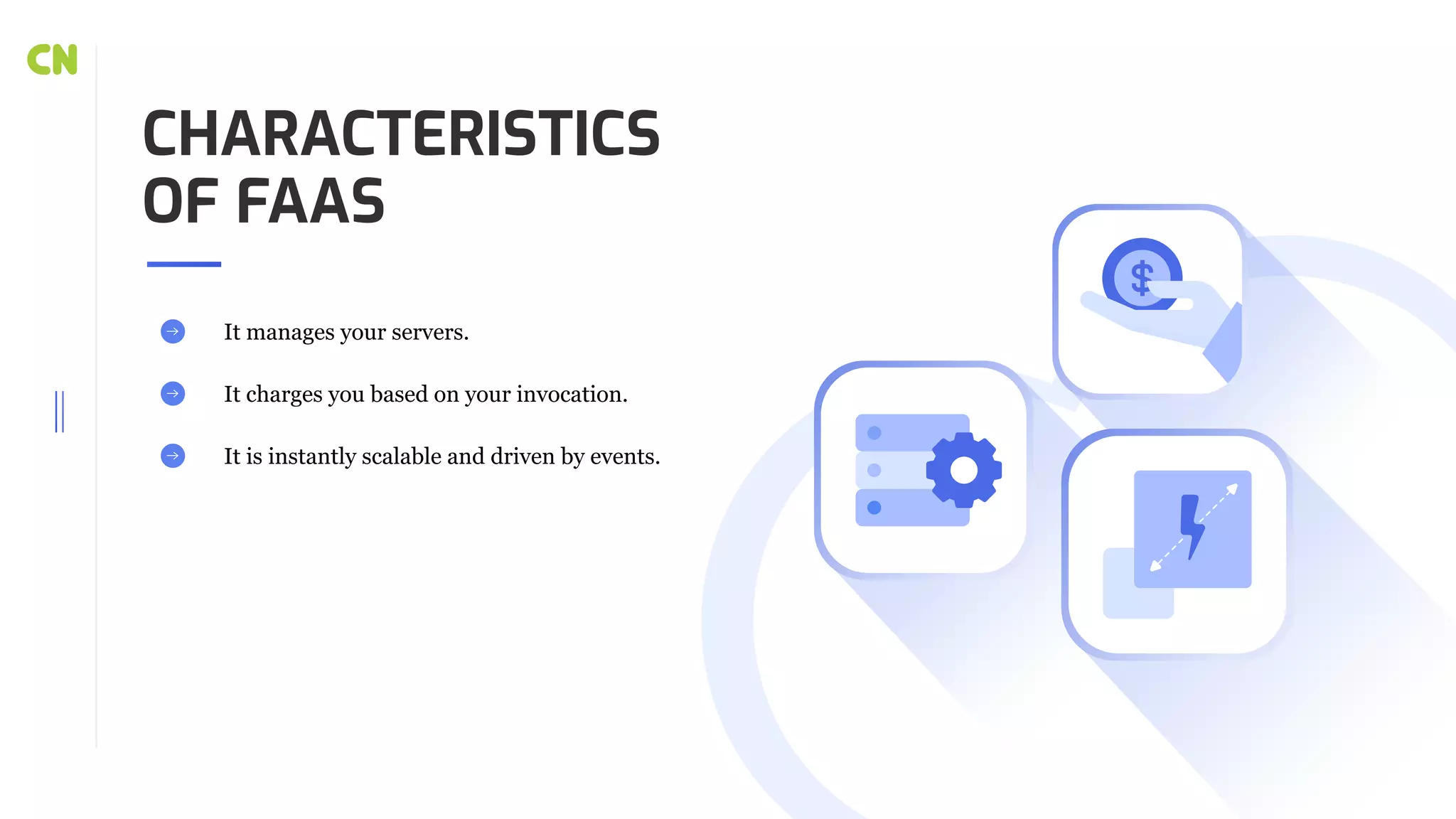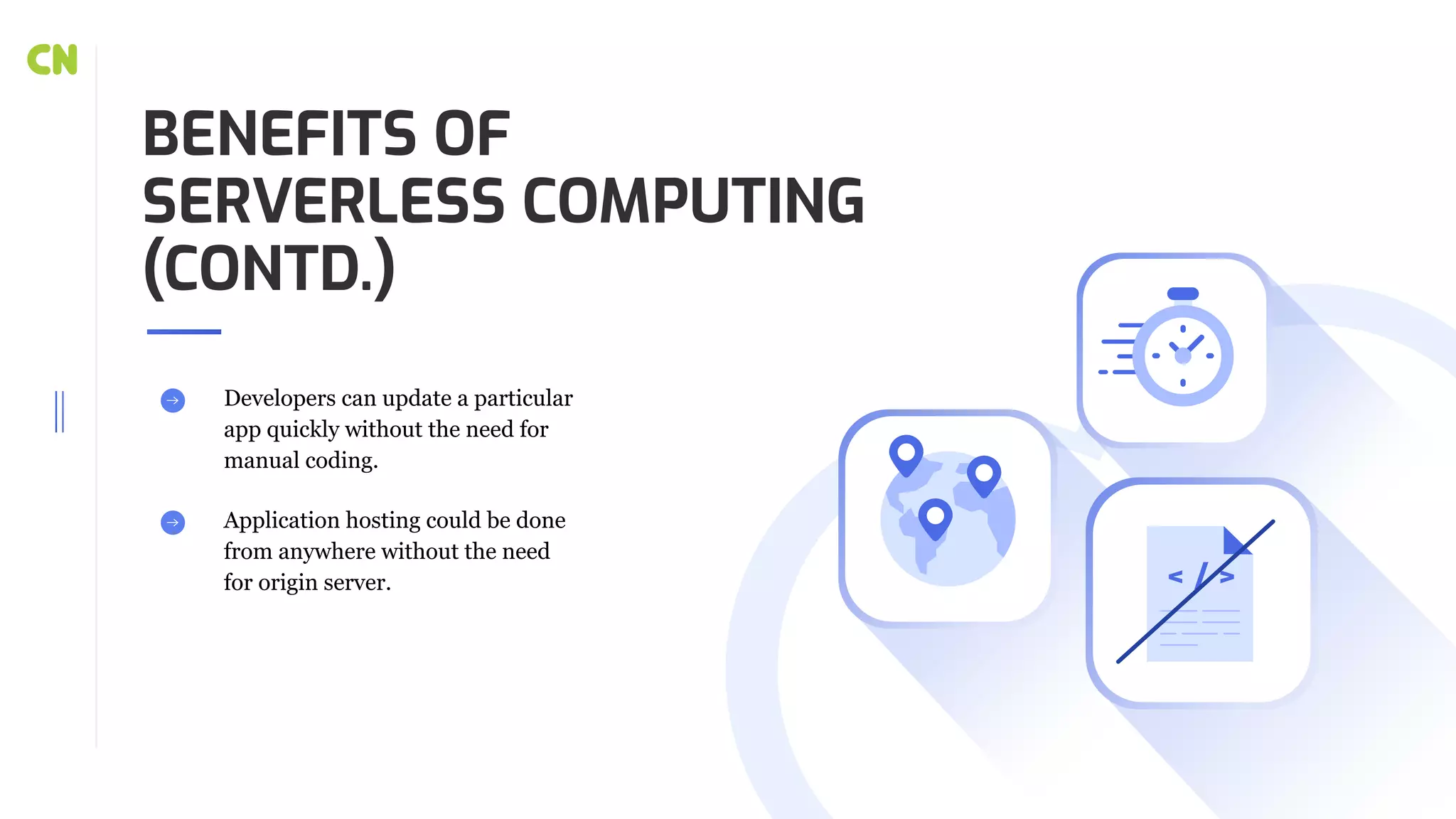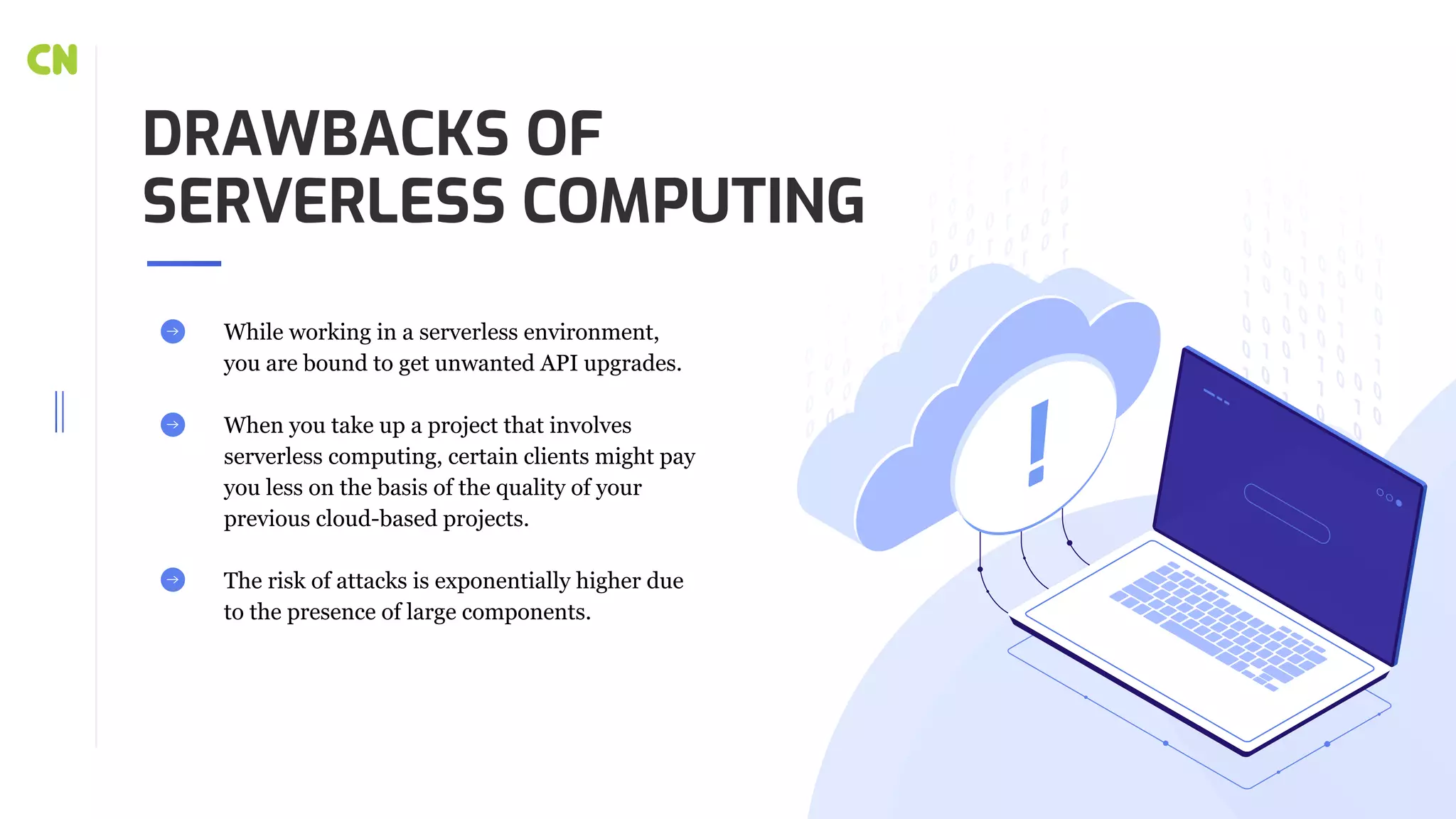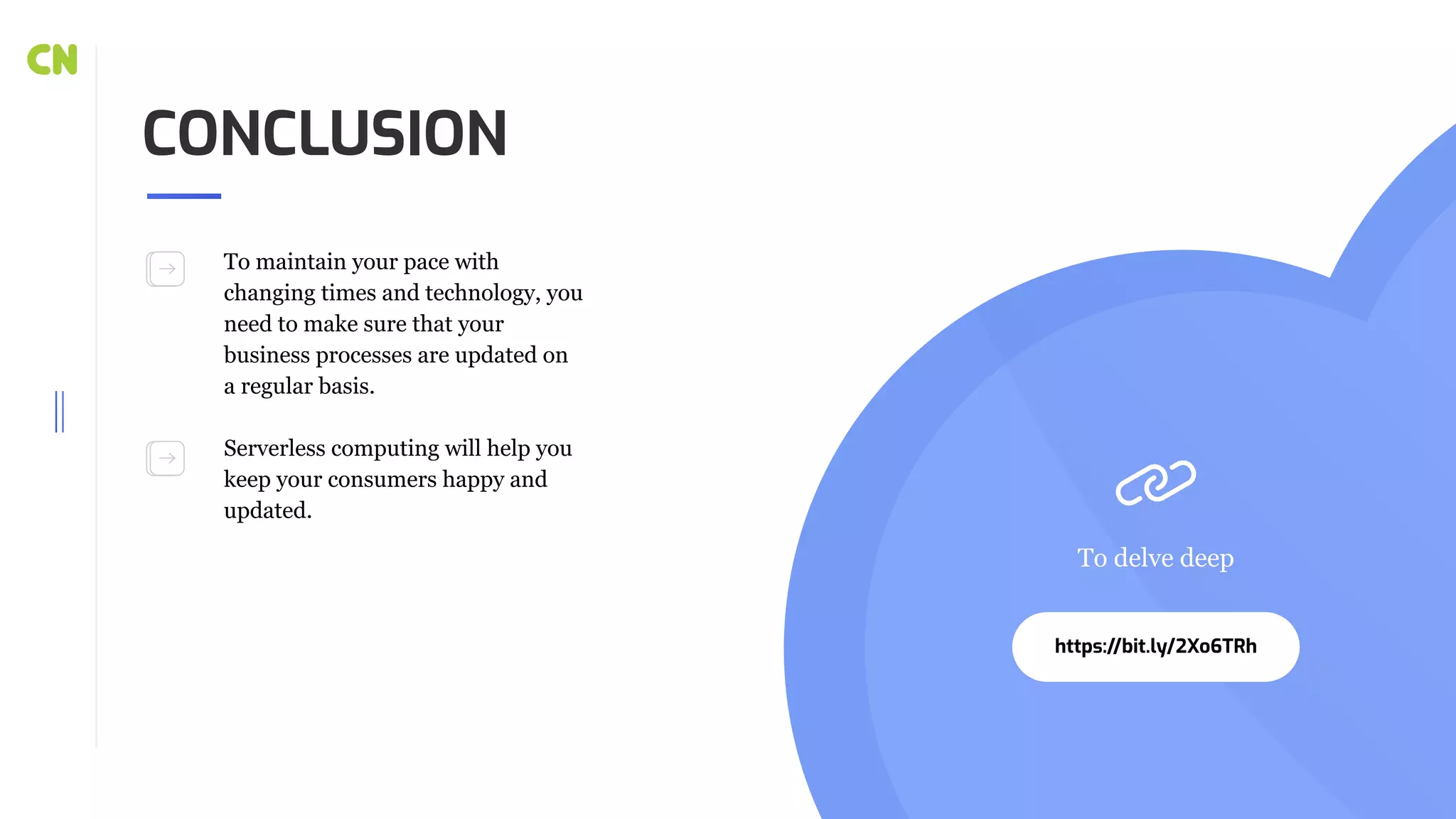Serverless computing is a cloud-based model where providers manage server resources, with benefits including reduced costs and automatic scalability. It contrasts with traditional computing by eliminating server maintenance and enabling rapid deployment of functions, often termed Function as a Service (FaaS). While serverless architectures offer significant advantages, they also come with drawbacks such as unwanted API upgrades and higher security risks.


